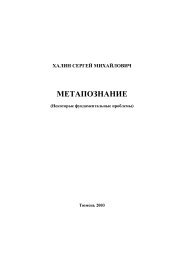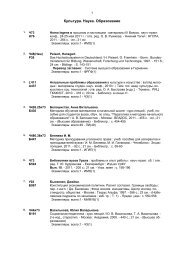The Economic History of Byzantium - Dumbarton Oaks
The Economic History of Byzantium - Dumbarton Oaks
The Economic History of Byzantium - Dumbarton Oaks
Create successful ePaper yourself
Turn your PDF publications into a flip-book with our unique Google optimized e-Paper software.
1008 NICOLAS OIKONOMIDES<br />
merkion was not an import duty; it was probably a charge payable by those who used<br />
the market, but for reasons <strong>of</strong> convenience it was collected when the goods were imported<br />
and might be refunded when unsold goods were reexported.<br />
<strong>The</strong>re is no way <strong>of</strong> calculating how important the kommerkion was for the state budget.<br />
Many scholars have assumed that the state revenue from it must have been considerable,<br />
but we have no certain figures. <strong>The</strong> few texts at our disposal seem to indicate<br />
that the overall level <strong>of</strong> sales and purchases was comparatively restricted, even in Constantinople,<br />
until the tenth century. Furthermore, an <strong>of</strong>ficial text <strong>of</strong> 911/12 seems to<br />
imply that the kommerkion in Mesopotamia yielded about 20 litrai <strong>of</strong> gold (1,440 nomismata)<br />
per year, while that <strong>of</strong> Chaldia yielded approximately half that sum. 92 Bearing<br />
in mind that both these provinces were at the ends <strong>of</strong> the great roads leading from<br />
Persia into Asia Minor, it is surprising to find that the turnover <strong>of</strong> the importers from<br />
the East was so small. <strong>The</strong> sum cited is too small even if we hypothesize that it concerned<br />
only such merchandise as was consumed locally and not that dispatched to the<br />
center, on which the kommerkion would be paid when it reached the Constantinople<br />
area.<br />
<strong>The</strong>re can be no doubt that the movement <strong>of</strong> goods was subject to other charges<br />
connected with the circulation <strong>of</strong> persons and commodities, with the means <strong>of</strong> transportation,<br />
and with the sale <strong>of</strong> goods. References to these charges come largely from<br />
subsequent periods and are dealt with below, particularly in view <strong>of</strong> the fact that their<br />
economic significance was relatively restricted.<br />
Also <strong>of</strong> limited importance were certain other items <strong>of</strong> state revenue, to which I shall<br />
simply refer. Fines were paid directly into the imperial vestiarion (or the sakelle); 93 the<br />
state could lay claim to, and <strong>of</strong>ten received, one-half <strong>of</strong> all treasure found by private<br />
citizens; 94 and the emperor retained for himself one-third, and later one-fifth, <strong>of</strong> all<br />
spoils <strong>of</strong> war. It is impossible to estimate the significance <strong>of</strong> this revenue for the state,<br />
although scholars presume that it must have been marginal. I shall not, consequently,<br />
be dealing with it here.<br />
<strong>The</strong> Sale <strong>of</strong> Titles and Allowances<br />
Among the most important sources <strong>of</strong> revenuefor the state was the attraction <strong>of</strong> private<br />
capital on the basis <strong>of</strong> the system <strong>of</strong> life-tenured administrative posts and titles <strong>of</strong><br />
honor. We know <strong>of</strong> this system from the tenth century thanks to some texts from the<br />
Peri basileiou taxeos, 95 and we also know that it continued in force unchanged into the<br />
eleventh century, at which time it went through a pr<strong>of</strong>ound crisis and was abolished.<br />
92 De cer., 1:697; cf. Laiou, “Exchange and Trade,” 735–36.<br />
93 To the sakelle in 897, to the vestiarion after 1007 (Lavra, 1: no. 1, line 29, and Iviron, no. 12,<br />
line 29).<br />
94 C. Morrisson, “La découverte des trésors à l’époque byzantine: Théorie et pratique de l’eu”resi"<br />
qhsaurou',” TM 8 (1981): 321–43.<br />
95 De cer. 1:692–94, studied in depth by P. Lemerle, “Roga et rente d’etat aux Xe–XIe siècle,” REB<br />
25 (1967): 77–100.








